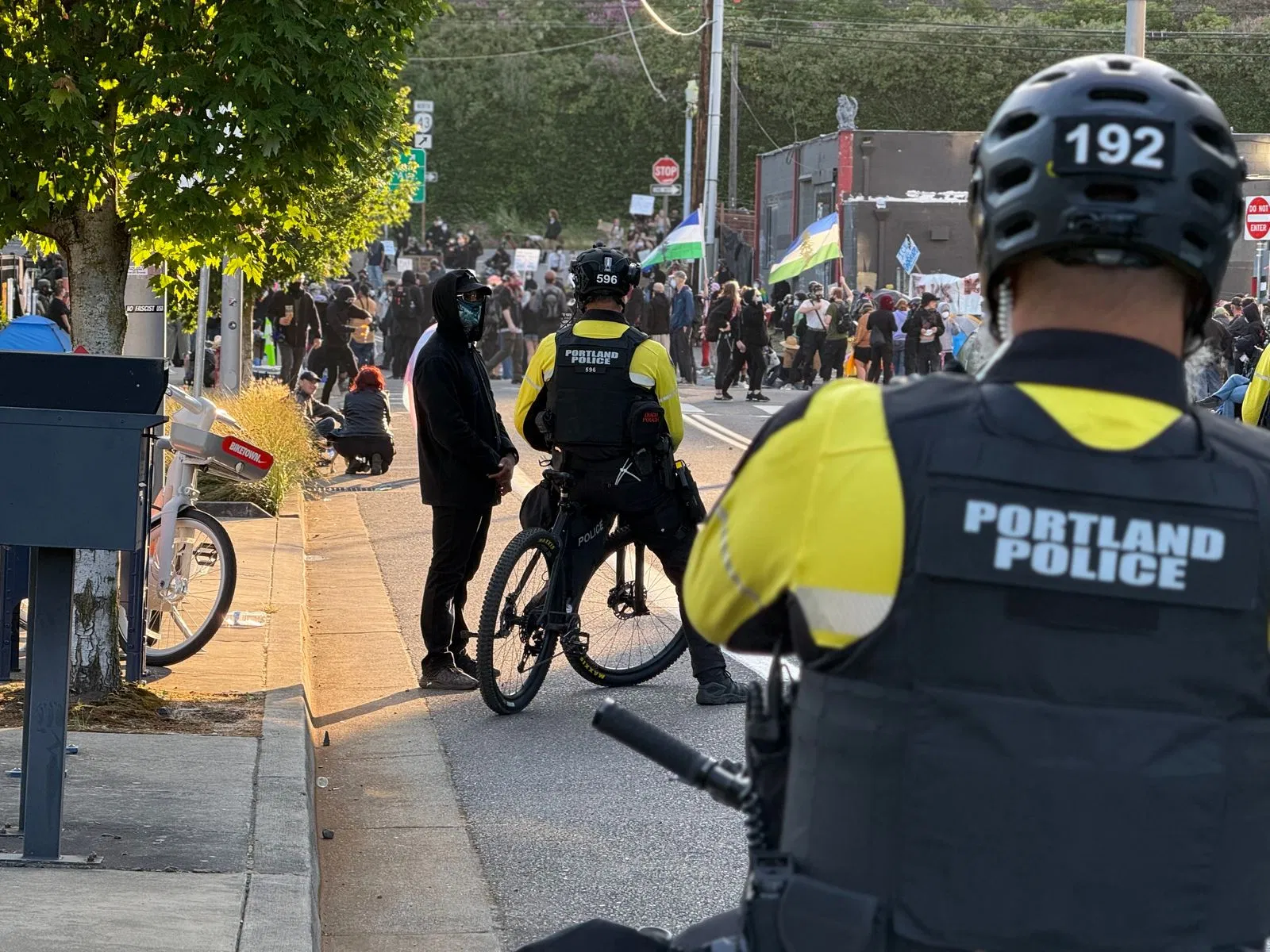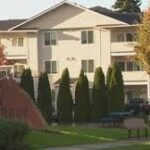A City Divided Over ICE Facility Protests
In Portland’s South Waterfront, the U.S. Immigration and Customs Enforcement (ICE) facility has become a flashpoint for months of sustained protest. Boarded-up windows, spray-painted graffiti, and daytime chants are routine. By night, the scene varies — sometimes quiet, sometimes volatile, with violent clashes between protesters, counter-protesters, and federal agents.
President Donald Trump has described the area as “a war zone,” a label disputed by city and state leaders but embraced by some residents living nearby.
Arrests and Escalating Tensions
The Portland Police Bureau (PPB) made several arrests in mid-to-late June. After a lull in enforcement, arrests resumed with two individuals detained over the past weekend. These developments coincided with heightened controversy over Trump’s decision to deploy Oregon National Guard troops to Portland.
Also Read
Federal officials argue the move is necessary to protect federal property. State and city leaders, including Gov. Tina Kotek, strongly oppose federal intervention, claiming it will inflame tensions. Yet some community members near the ICE facility say they welcome the additional protection.
In a statement submitted to KATU, Portland resident Cloud Elvengrail expressed frustration:
“Governor Kotek sleeps at night surrounded by armed police. And if somebody assaulted her like I’ve been assaulted, they would be prosecuted to the fullest extent of the law. If you’re wealthy and connected, the city is safe for you. If you’re poor, Black, disabled, or a domestic violence victim, the city’s message is clear: you’re on your own. The President has heard our cry for help and is sending in support to protect my neighborhood.”
Elvengrail’s lawyer sought to compel PPB to enforce city laws more aggressively around the facility. A state judge rejected the motion, ruling the court had no authority to direct police deployment.
Police Logs Reveal Tensions
Court evidence included internal PPB logs showing the bureau has monitored the protests closely while sometimes choosing not to intervene.
One log entry from June 25 reads in part:
“If it were not ICE, we could assist directly. City council posturing and messaging and no PPB presence, heavy-handed fed response fired up and galvanized crowd. Let’s demobilize.”
This entry reflects the balancing act police face: responding to calls for service while navigating political pressure, legal constraints, and public perception.
Union Representative: Officers Lack Clear Direction
According to Aaron Schmautz, president of the Portland Police Association, officers are often left in an impossible position.
“Our officers want to respond to those calls,” Schmautz said. “But when there’s not a clear understanding about what our goals and tasks are, it creates significant dissonance. Our command is trying to weigh what the community is asking for while we are also incredibly understaffed — we’re probably half the size we should be. So we’re forced to prioritize which calls we respond to.”
Schmautz said officers receive a steady stream of complaints from neighbors, ranging from noise violations to violent confrontations. But with limited resources and unclear direction from city leaders, officers are often forced into reactive roles, arriving after conflicts have already taken place.
Legal Constraints and Political Pressures
Oregon’s sanctuary laws complicate matters further. State and local police are prohibited from directly aiding federal immigration enforcement. That legal boundary has caused controversy.
In early June, PPB officers responded when protesters blocked the ICE facility’s driveway. After clearing the barricade, the bureau faced criticism from some on city council for “assisting” federal operations.
“There was criticism from council about the fact that police had effectively, in their mind, assisted immigration enforcement,” Schmautz explained.
He added that PPB has received no clear directive from the council on how to respond to ongoing protests. While some council members lean toward limiting police involvement, others want more enforcement. The mixed signals, he said, leave frontline officers unsure of how to act without risking political backlash.
A Community at Odds
For residents living near the ICE facility, frustrations run high. Some demand stronger enforcement to restore peace in their neighborhoods. Others believe federal agents’ heavy-handed responses inflame tensions and escalate violence.
Videos circulating online show chaotic scenes, but rarely provide the full context leading up to clashes. Federal agents say they are responding to threats against their facility, while protesters insist their demonstrations are constitutionally protected.
In this climate, Portland police are left in the middle — not leading enforcement but not entirely absent either.
Searching for Balance
Schmautz argues the lack of clarity is harming both police morale and public safety. “When our officers are left guessing about what’s expected of them, it doesn’t serve anyone — not the community, not city leaders, and not the officers themselves,” he said.
He believes Portland needs a clearer strategy for handling politically charged protests, especially when multiple layers of government — city, state, and federal — are involved.
For now, PPB continues to walk a thin line: responding where it can, avoiding actions that might be seen as aiding federal immigration enforcement, and trying to maintain order amid conflicting pressures.
The Bigger Picture
The ongoing disputes highlight broader challenges Portland faces as it navigates deep political divides. The city is attempting to uphold state sanctuary laws, maintain community trust, and preserve public safety — all while federal officials escalate their involvement and locals disagree sharply about the solutions.
For Portland police, caught between all sides, the path forward remains uncertain. As Schmautz put it:
“Our officers are here to serve the community. But until there’s agreement about what that service looks like in this moment, we’re going to remain stuck in the middle of a political storm.”












